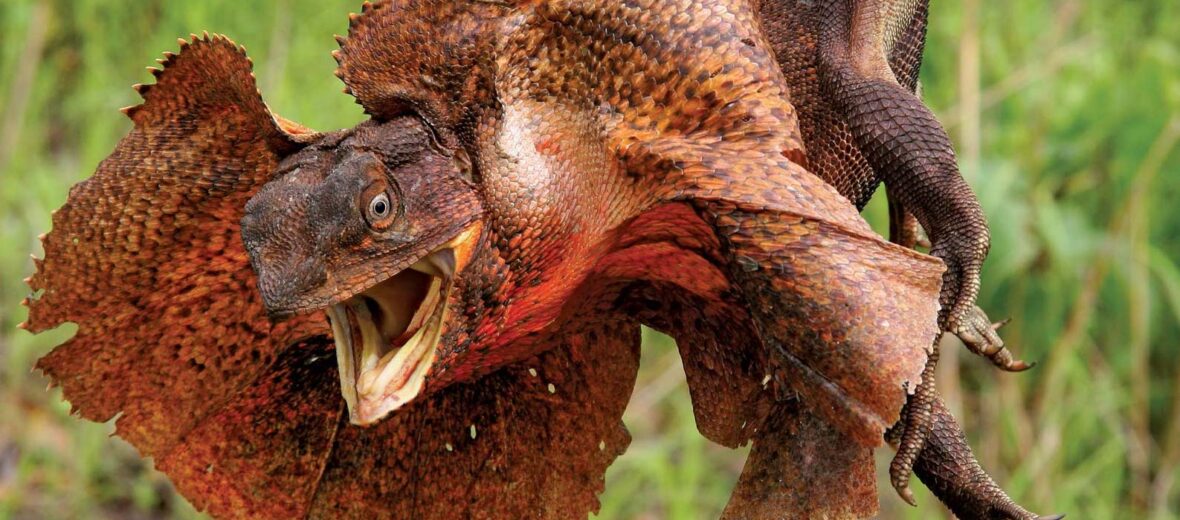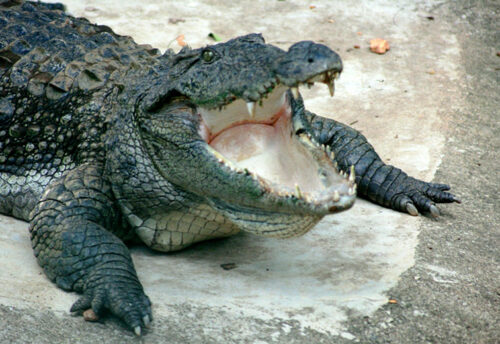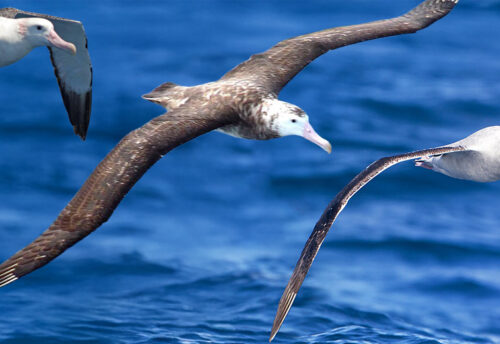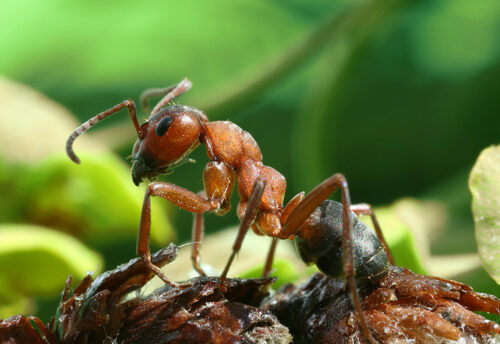
Looking like something straight out of Jurassic Park, we have the frill necked lizard. They are quick ambush predators that have a really cool defense mechanism… a large fan-like frill that they extend to make themselves seem larger and more fierce. If that doesn’t work, they are able to quickly run away on their hind legs to the safety of a nearby tree.
First the Stats…
Scientific name: Chlamydosaurus kingii
Weight: Up to .5 lbs.
Length: Up to 2.8 feet
Lifespan: Up to 20 years
Now on to the Facts!
1.) The frill necked lizard has a colorful flap of skin around their neck. This is a group of pleats and it is typically folded. They expose their neck frill when they feel threatened, during mating rituals, and to eliminate excess heat. The flap is up to 12 inches in diameter when unfolded.
2.) These lizards are diurnal (active during the day).
3.) This lizard is an ambush predator. It lays in wait for the right opportunity to strike and then they attack.
4.) They eat cicadas, spiders, ants, small lizards, termites, and even small mammals.
5.) They are arboreal (spend most or all of their lives in trees).
But wait, there’s more on the frill necked lizard!
6.) Females lay between 8 – 23 small eggs in an underground nest. Incubation lasts 2 – 3 months.
7.) The frill necked lizard is a solitary creature, sans breeding time.
Did you know…?
A frill necked lizard was imprinted on the Australian 2 cent coin that was used as a currency until 1991.
8.) Just like tortoises, temperature determines gender. Warmer temperatures result in females and cooler temperatures yield more males.
9.) Their main predators are larger lizards, dingoes, birds of prey, cats, and the pet trade.
10.) When they have to make a hasty retreat, they can run quickly using bipedal locomotion (using hind legs to run).
Now a Short Frill Necked Lizard Video!
Also, check out the Critter Science YouTube channel. Videos added frequently!
Want to suggest a critter for me to write about? Let me know here.



